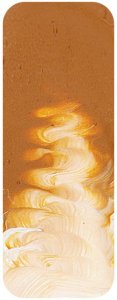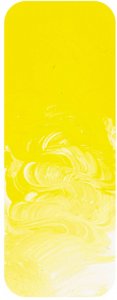Description
"Cerulean is a latin word name which literally means ??sky blue??. Consequently when we say Cerulean Blue we are actually saying sky blue blue which reflects how common usage of language is often illogical, not that it matters a great deal. The name was given in 1860 to a pigment which had been developed 55 years earlier but had been forgotten as a curiosity by chemists who didn???t realise how important sky blue colours are to artists. As soon as it was launched as an artist???s paint in 1860 it became very popular. It was a compound of cobalt and tin of great permanence - it is believed to be one of the top 3 or 4 pigments in regard to absolute resistance to light along with Titanium White and Chromium Green Oxide. During the mid 20th century a chromium version of the original Cerulean pigment was developed with virtually the same permanence as the original and it is this chromium version which is in Matisse Cerulean Blue.
Chromium is a fascinating element. Most metals exist only in silvery grey, or relatively colourless compounds. Copper is an exception along with chromium. While copper was exploited as a colour from antiquity, chromium had to wait until the 18th century for its turn. It had been used in China around 2,000 years ago to harden arrow tips and the ancients enjoyed one of its natural colouring properties when they admired rubies (the red comes from chromium impurities) but the hardness and relative rarity of usable chromium deposits caused it to be poorly understood until the Industrial Revolution when it was first used as a red colour in 1760 that was thought to be a lead compound since the source ore was found in association with lead. It took another 4 decades before the metal was isolated and its properties in alloys with iron to make stainless steel came along at the beginning of the 20th century, and electroplating to make shiny chrome surfaces was a product of the 1920???s. Meanwhile artists were benefiting from pigments such as Viridian in the mid 19th century and eventually this beautiful Cerulean Blue.
Cerulean Blue is similar to Azurite which was used from ancient times but lacked the high degree of permanence of the modern pigment. it is a little dark used straight from the tube for painting skies, but mixed with a little Australian Sky Blue it is often just right. Sky colours vary a great deal according to time of year or time of day, and weather is a huge factor, so no exact mixture can be given but a rule of thumb is that mixtures in varying proportions of Cerulean Blue, Australian Sky Blue, and touches of either Ultramarine Blue or Cobalt Blue will recreate the blues found in clear skies, especially in the middle part of the day.
Having made a sky a landscape needs many greens and Cerulean Blue is well suited to making these. Greens made with Cerulean Blue mixed with earth colours such as Transparent Yellow Oxide are particularly valuable and have extraordinary permanence that the old masters would have been very envious of. Greens are just the beginning of what the artist can do with this wonderful colour. Try mixing with Cadmium Orange to make smokey mid greys or with Venetian Red for sensual deep but earthy mauves. Turquoise is another specialty of this colour. Try mixing it with Cobalt Teal or Aqua Green Light for light or mid turquoise colours, or with Phthalocyanine Green or Matisse Emerald for darker Turquoise. Cerulean Blue has truly been a blessing for artists.
"





